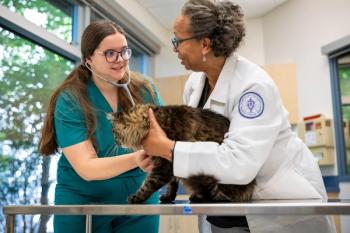
Four-Legged Pharmacists: Animals and Self-Medication
In recent decades, it has become well known that animals use plants to self-medicate.
The History of Traditional Medicines
For thousands of years, various traditional medicine systems and folk medicines have centered on the use of plants and other natural substances. The quest to find new drugs from natural substances has also increased in recent decades. In conventional Western medicine, about half of pharmaceutical products either contain or are derived from natural substances; indeed, approximately 47% of
What Do Animals Do When They Become Sick?
In recent decades, it has become increasingly apparent that many animals also use plants to
What’s the Evidence for Self-Medication in Animals?
Many animals seem to have developed the ability to exploit the therapeutic compounds in plants. And, although the evidence for this is circumstantial, many examples exist.
Anyone who owns a dog has, at some point, probably watched their pet eat grass. This behavior is believed to be an attempt to self-medicate, either to stimulate retching or to help to eliminate worms. Other animals, including red and green macaws, eat clay to help digestion and kill bacteria; when some lizards are bitten by a venomous snake, the lizards are considered to eat a particular root to neutralize the venom; and, in Kenya, pregnant elephants eat certain tree leaves to stimulate birth.
However, most of the evidence about self-medication in animals comes from the great apes. For many decades, several researchers have described seeing chimpanzees eating certain leaves—often swallowing them whole. Due to the fact that the chimps gained no nutritional value from the leaves by swallowing them without chewing, one researcher suggested the chimps were self-medicating. Another researcher, Michael Huffman,
According to Huffman, the plants had a rough texture with bristly leaves. He thought the chimps were eating these plants to use the roughness to help eliminate intestinal parasites. He then described criteria for judging when an animal is using a plant to self-medicate: the plant eaten is not a regular part of its diet; it is not being eaten for nutritional value; it is being eaten during times of the year when parasites are most likely to cause infestations, such as during the rainy season, and other animals in the group don’t eat the plant.
The swallowing of entire leaves—without chewing—by apes across Africa has been reported for more than 40 plant species. One recent
In addition to using the leaves for their scouring effect to eliminate parasites from the intestinal tract, researchers hypothesize that the leaves may help to heal wounds caused by parasites and may also have anti-inflammatory effects. By rolling the leaves into a ball, the bonobos may help to keep them intact longer, so the leaves can have medicinal effects lower down in the intestinal tract.
How Do Animals Know How to Self-Medicate?
Experts consider that animals use both learned and innate responses to select plants to
However, other studies have shown that this behavior can be learned, in particular among animals such as
So, it seems that animals have been studying medicine longer than people have been studying it. Animals have successfully used plants as medication for various conditions and some medicines have even been developed from plants. Considering the mounting problem of antibiotic resistance, experts in zoopharmacognosy therefore emphasize that humans can learn from animals, particularly when it comes to finding new medications. In a news feature in
Dr. Parry graduated from the University of Liverpool, England in 1997 and is a board-certified veterinary pathologist. After 13 years working in academia, she founded Midwest Veterinary Pathology, LLC where she now works as a private consultant. She is passionate about veterinary education and serves on the Indiana Veterinary Medical Association’s Continuing Education Committee. She regularly writes continuing education articles for veterinary organizations and journals, and has also served on the American College of Veterinary Pathologists’ Examination Committee and Education Committee.
Newsletter
From exam room tips to practice management insights, get trusted veterinary news delivered straight to your inbox—subscribe to dvm360.





